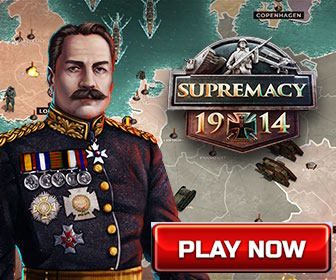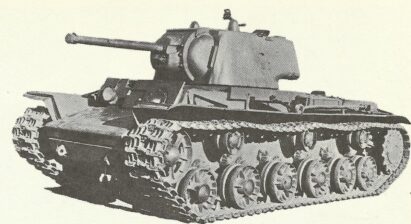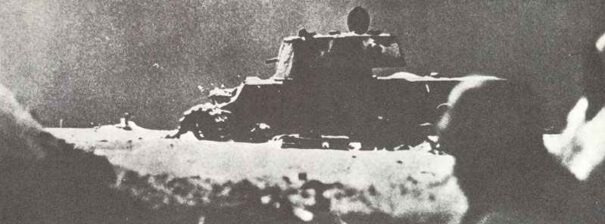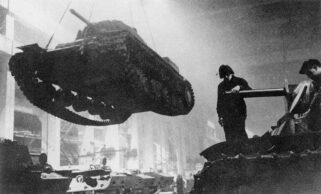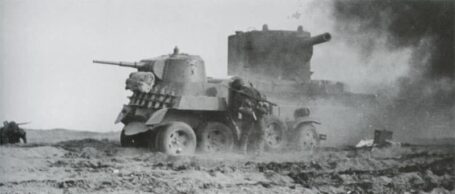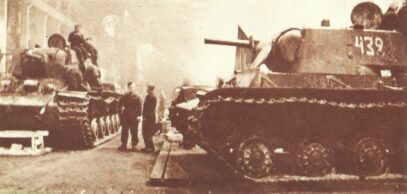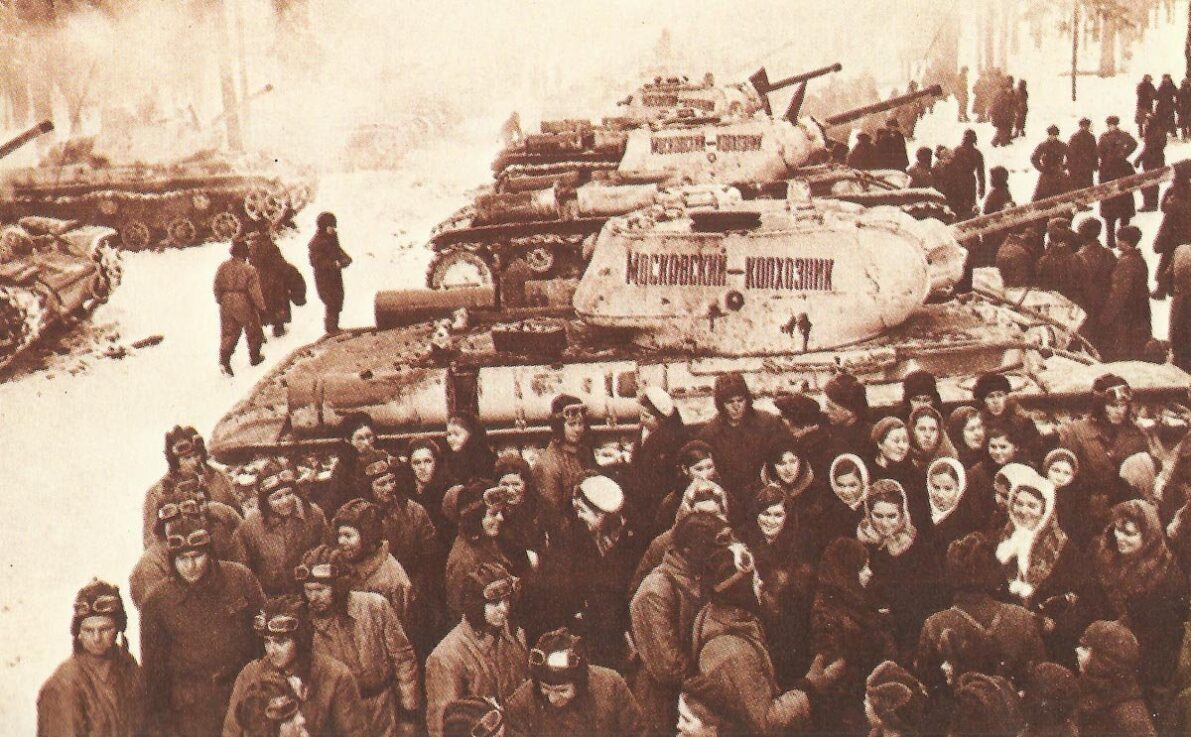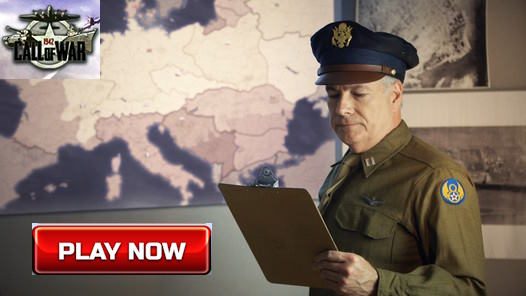Soviet heavy tank KV: from KV-1 and KV-2 to model 1942.
History, development, service, specifications, statistics, pictures and 3D model.
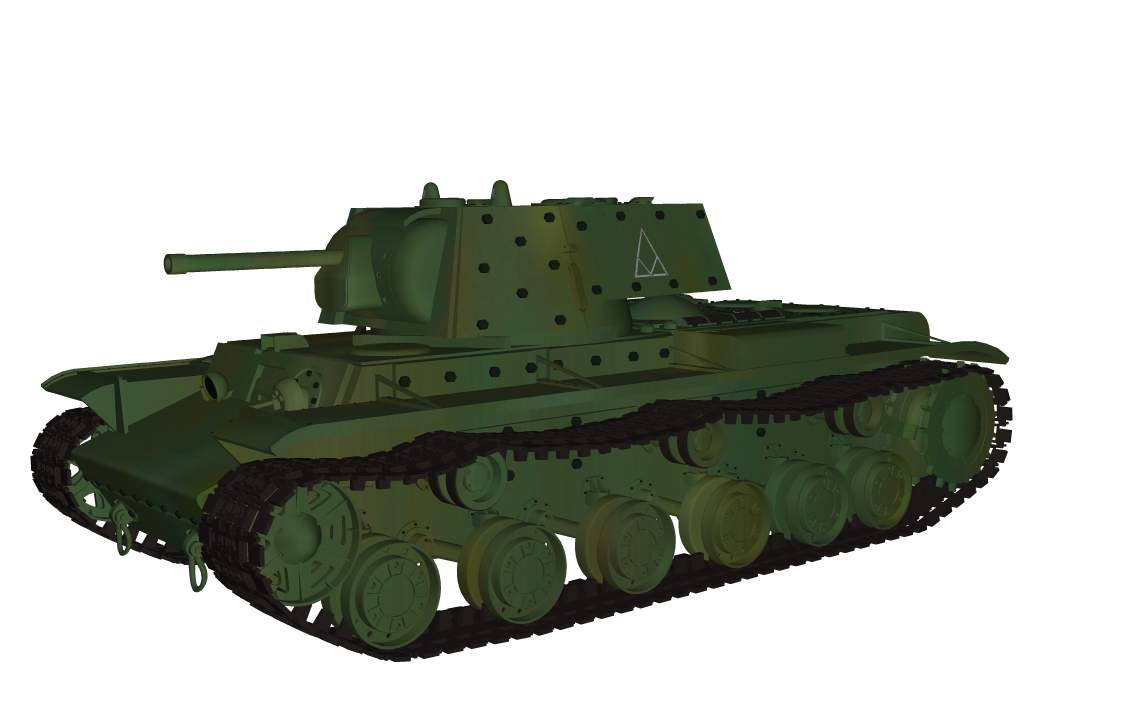
KV-1, KV-2, KV-3
Type: Heavy tank and howitzer.
Development
Table of Contents
In addition to the T-34 medium battle tank and the T-40 light tank, the third tank of the new generation of Russian combat vehicles was the KV tank at the beginning of World War II. This third new main battle tank was intended to replace the heavy tank T-35.
Since 1938 this new heavy tank has been developed by two competing teams. One of them was Barykov’s OKMO at the tank factory Zavod No 185 in Leningrad as well as a new team which was leaded by Lieutenant Colonel Zh Kotin in the Kirowskiy factory also located in Leningrad.
Kotin had been one of Tukhachevsky’s protégés, but had survived the purges and was the head of the development office of the Academy of Motorization and Mechanization (AMM) in Moscow before his new assignment in Leningrad.
His team included the veteran Russian tank designer, N Tsiets, who was already responsible for the T-28 and T-35 heavy tanks, and several talented younger engineers such as N Dukhov, A Yermolayev and N Shashmurin.
The specification for the heavy tank required a ‘anti-tank gun destroyer’ with 5 turrets (!) and sufficient armor to withstand the 37mm anti-tank gun at any distance and the 76.2 mm gun at distances over 1,300 yards (1,200 meters).
Both teams were against the idea of building a tank with 5 turrets, so the number was reduced to three before the serious work began.
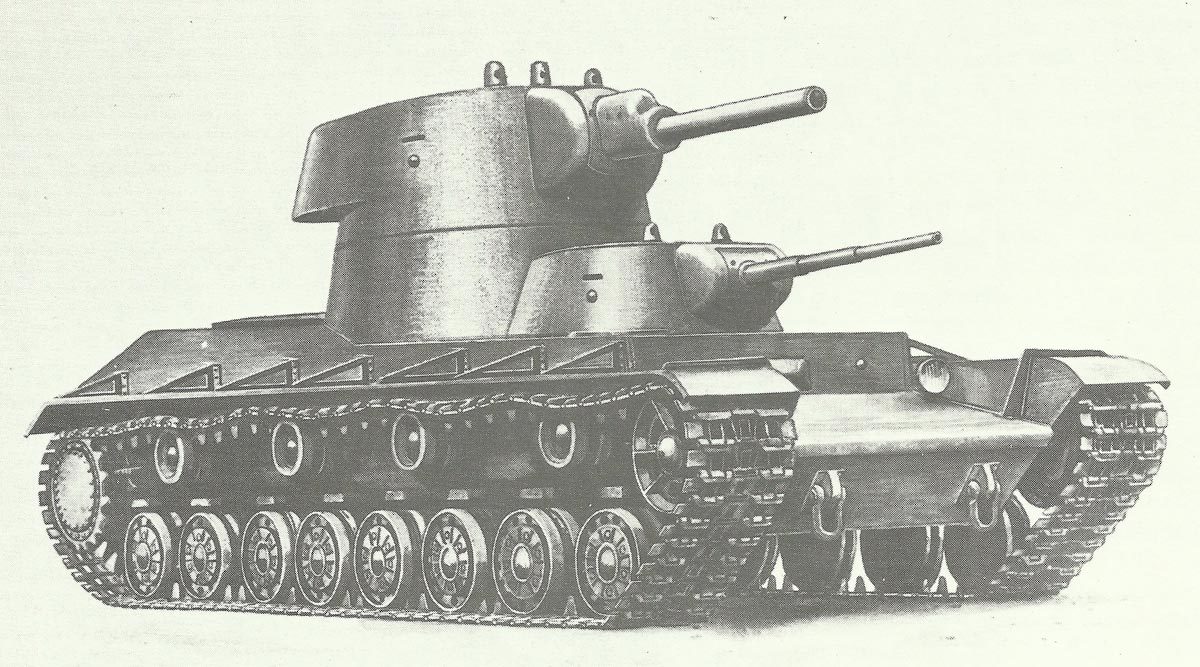
In May 1938, at a special session of the Soviet Defence Council, the designs of the OKMO team, known as the T-100 ‘Sotka’, and the SMK (for S M Kirow) of the Kotin development team were presented.
Kotin’s presentation was critical vs the three-turret concept, which provoked Stalin to go to one of the models and demolish one of the smaller turrets and exclaim: ‘Why should a tank become a department store?’
After this presentation, both offices revised the plans into a tank with only two turrets. The proposals were then presented at a special meeting of the Central Committee of the Communist Party in August 1938, where they were approved.
Kotin and his team were still disturbed by the archaic appearance of the tank with two turrets and secured Stalin’s permission to develop another version of the SMK tank with only one turret. This design was called KV tank, after Stalin’s personal friend Klimenti Voroshilov, who was War Minister at the time.
Basically T-100 and SMK were similar in appearance. Each had a main turret with a 76.2 mm gun on a high ring and in front of it a smaller, lower turret with a 45 mm gun.
The first prototype of the T-100 was completed in May 1939, while work continued on a second.
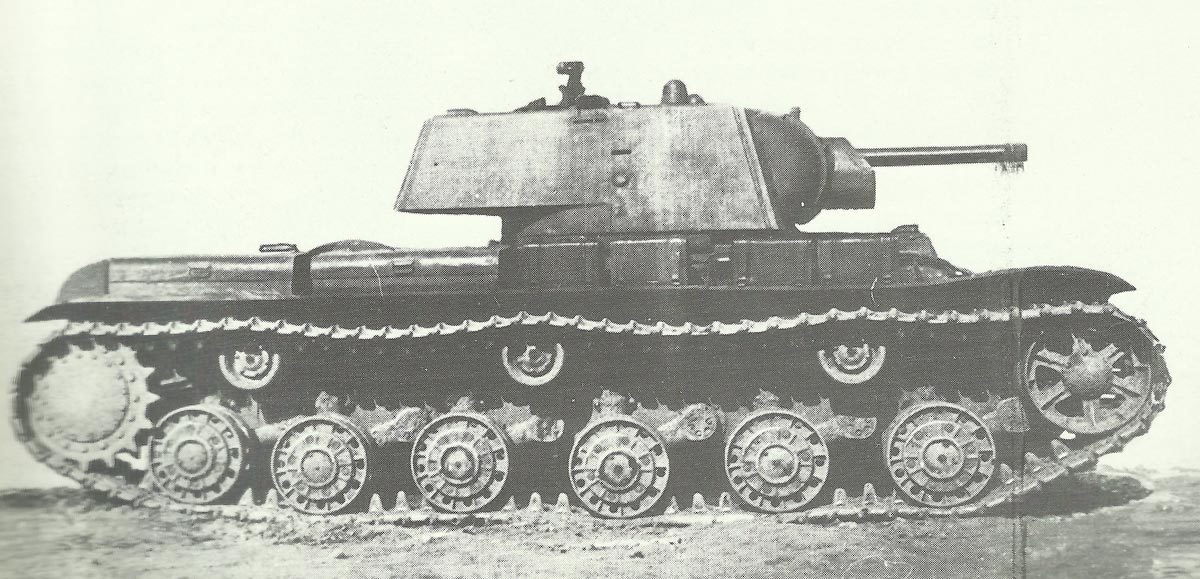
The first SMK prototype was completed in August together with a prototype for the KV. Both the SMK and the KV were to be driven by the new V-2 diesel engines from the Kharkov diesel plants (Zavod No 75). However, since there were not enough available, the SMK used an AM aircraft engine.
The SMK was equipped with the L-11 76.2 mm gun developed at the Kirowskiy factories, while the KV was to be armed with a more powerful F-32 76.2 mm gun developed by the Grabin team of the Zavod No 92 factory in Gorki. But the F-32 was not finished in time and so the L-11 was installed in its place.
In September 1939 the prototypes were sent to the NIIBT in Kubinka for trials and demonstrations to leading party and army members. Not surprisingly, the KV prototypes were much better than the SMK or T-100 in the driving tests.
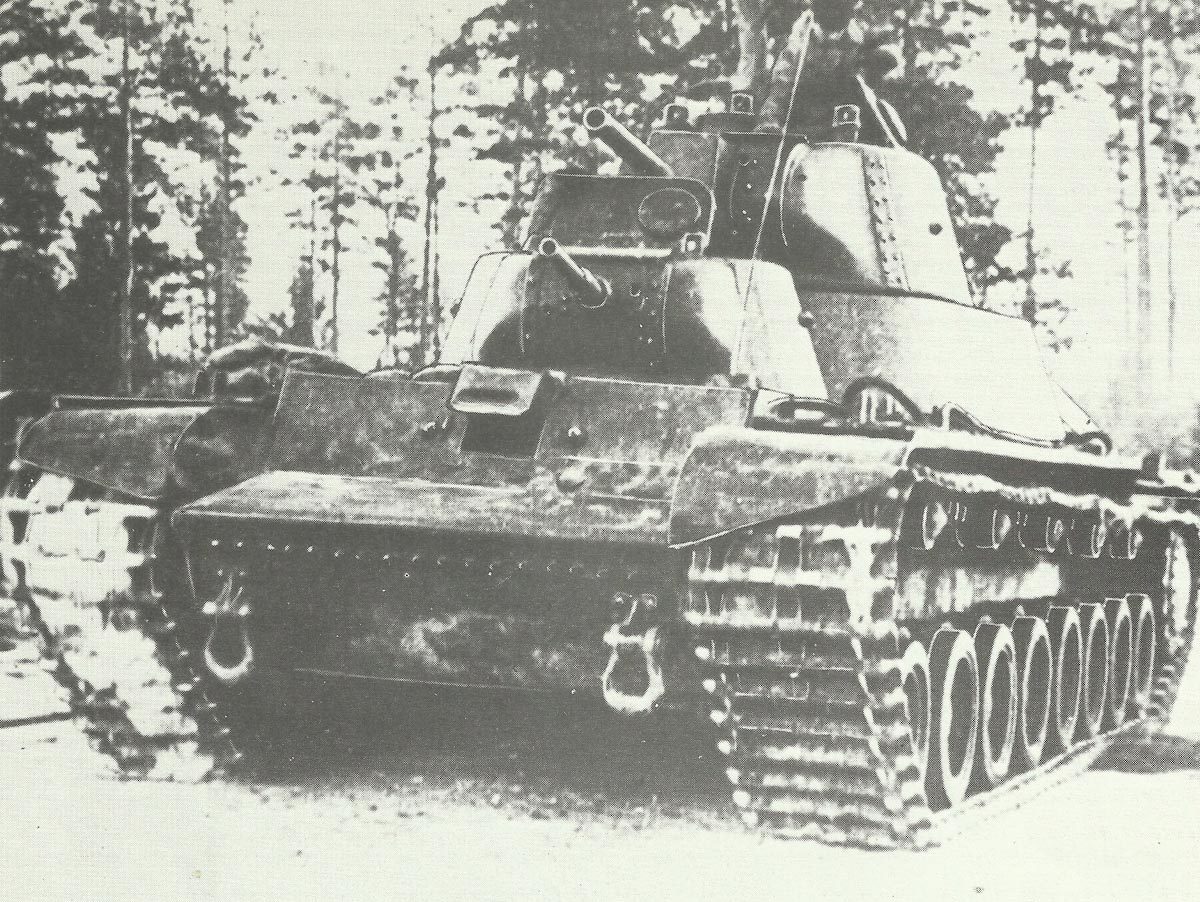
With the outbreak of the Winter War in Finland, the prototypes were sent to the front for experimental combat trials with the 20th Heavy Tank Brigade, a unit otherwise equipped with T-28. Even before the end of the battle trials in Finland, the Defense Council designated the KV as the new heavy main battle tank and began planning its production.
During the fighting in Finland one of the KV prototypes was damaged and the SMK was disabled when it rolled over a larger mine. The broken down SMK was photographed by the Finns and the German information service mistakenly identified it as T-35C.
The fighting experience in Finland eliminated any doubt about the future of the SMK or T-100, although Kotin still received permission to start work on a heavily modified SMK, the SMK-2, which was never completed.
Bunker buster KV-2
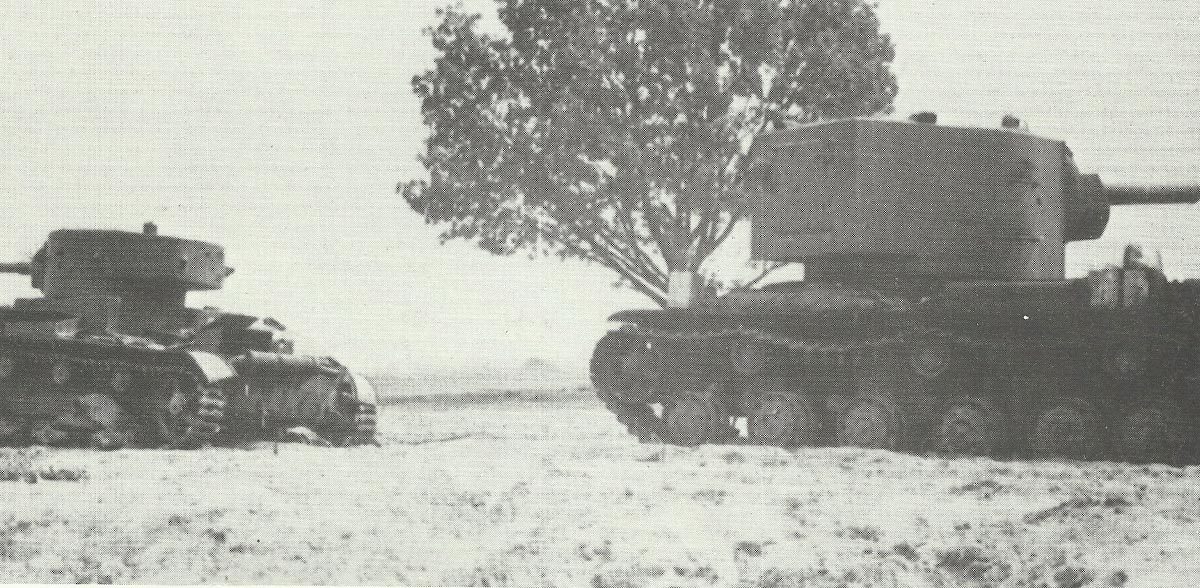
One of the main concerns of the commander of the Russian 7th Army in Finland, K Meretskow, was the demand for a heavy tank with an even larger gun to eliminate strong bunkers of the kind found by his troops at the front.
The OKMO team designed a solution for this from a T-100 prototype before its dissolution by reconstructing it with a fixed superstructure with a B13 130 mm naval gun. The vehicle was called SU-100Y. It was not accepted for production, but the prototype was used to defend Moscow in 1941.
Kotin’s office used an extended KV tank armed with a 152-mm Br-2 gun or a 203-mm B-4 howitzer. Designated SU-212 or Object 212, but never completed.
A more practical solution for turning off bunkers was the attempt to mount a 152 mm howitzer in a large turret on the KV chassis, practically as a heavy counterpart to the BT-7A artillery tank.
This artillery version of the KV tank was finally accepted for production. It was originally called the ‘large turret KV’ to distinguish it from the normal KV tank. Finally, the tanks were called KV-1 heavy battle tanks and KV-2 heavy artillery tanks.
Production
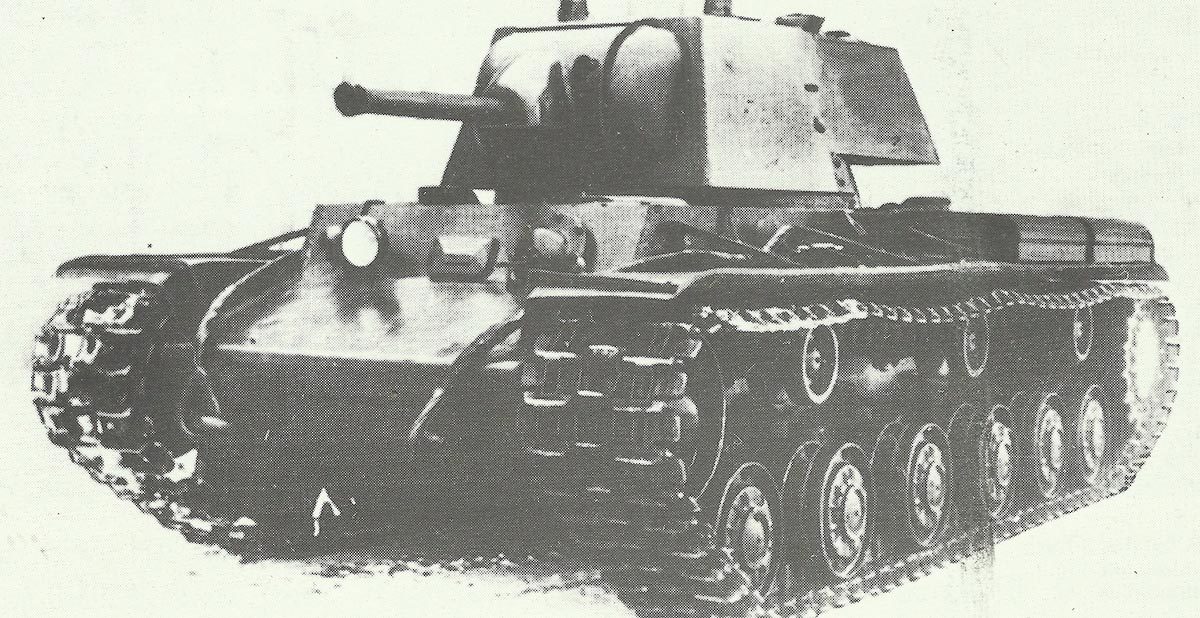
The Kirovsky Works and the Chelyabinsk Tractor Factory (ChTZ) received the order to produce the KV tanks. By the end of 1940 the Kirovskiy plants had produced 141 KV-1, 102 KV-2 and one KV prototype (KV-3). The ChTZ factory had not yet produced any KV tanks.
KV-3
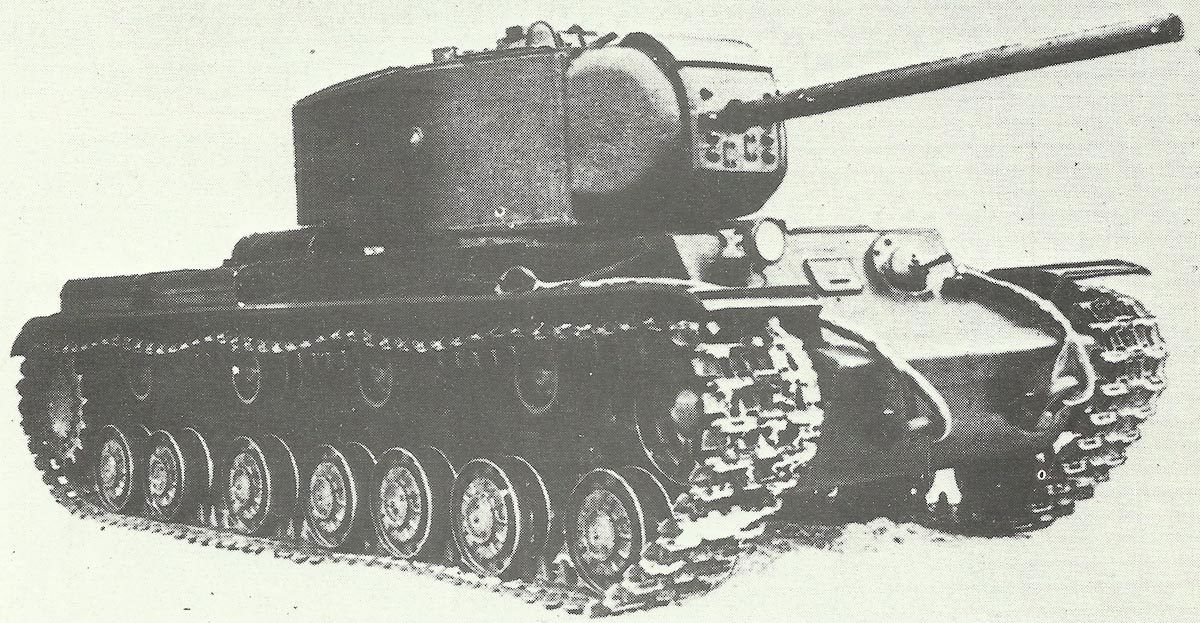
Following the success with the KV-1 and KV-2, the Kotin team turned to an improved version of the heavy tank – the KV-3 – and two super heavy tanks, the 108-ton KV-4 and the 150-ton KV-5. None of the last two projects went beyond the planning studies.
Two versions of the KV-3 were investigated. Object 220 was a heavily rebuilt KV-1 with an extended hull, larger turret, heavy gun and stronger engine, while Object 222 had been less heavily modified from the original KV-1.
Apart from the F-32 gun, which was finally available, the main improvement of Object 222 was the reconfiguration of the turret design. Until then, the Russian tanks were usually dependent on only two crew members in the turret: a gunner, who operated the main gun, and the tank commander, who had to reload the main gun in addition to commanding the tank. This additional task seriously disturbed the commander in the command of the tank, but was not shown during the annual summer maneuvers, which corresponded more to a ‘mechanized vehicle show’ than to realistic tank tactics.
In the heavy tanks there was a third crew member in the turret to operate the rear-facing stern machine gun, but he was too badly placed to assist the commander in loading the main gun. In Object 222 the arrangement of the crew was therefore newly regulated, so that the third man in the turret became the loader and freed the commander from this additional task.
Also, the tank received an improved command cupola, which offered a better all-round view. To the disappointment of the Russian tank crews these reasonable modifications were introduced only starting from 1942 with new tanks, up to which time the shortsightedness of the original drafts became bloody recognizable.
The introduction of the increased armament of the Object 220 project with a new 85 mm gun was hindered by another ignorant and new member of the tank command staff. Marshal Kulik pointed out that intelligence reports noted that the current German tanks were so heavily armored that neither the new Russian 57 mm anti-tank gun, nor the 76.2 mm standard anti-tank gun would be effective.
On the basis of this fantastic announcement, Kulik ordered the cessation of production of the 57 mm anti-tank and 76.2 mm tank guns and demanded the development of a new ZiS-6 107 mm gun.
So Grabin and his cannon development team shifted work from the 85 mm gun to the new ZiS-6 107 mm gun, which was still not finished when the war against Germany began. As a result, Object 220 was not completed until the end of 1941, and Kulik’s inserts unnecessarily delayed the production of outstanding and much-needed anti-tank guns.
KV tank at war
After the start of Operation Barbarossa, the German attack on the Soviet Union, the weak points of the Russian tanks came to light.
At least three problems had to be solved with the KV-1 heavy main battle tank: technical defects in the design, inadequate armament and adequate armor.
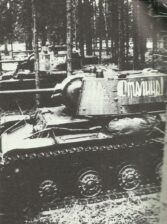
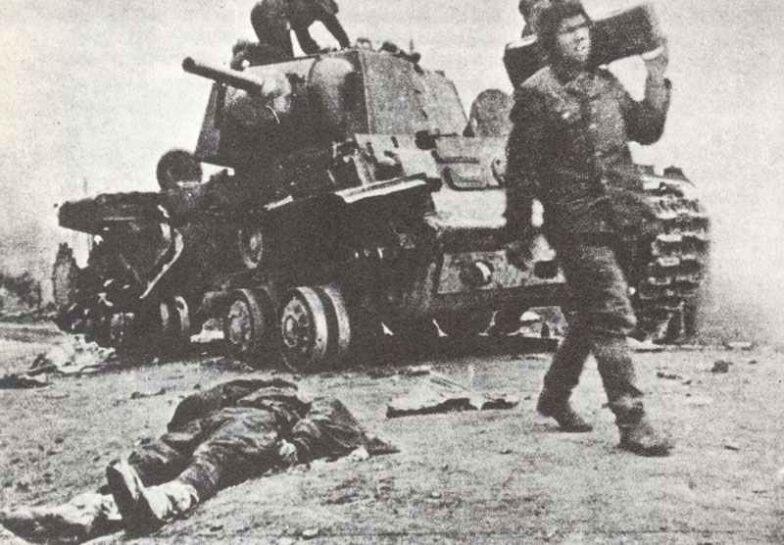
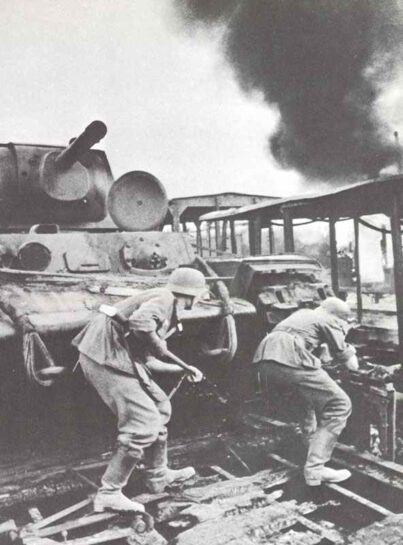
The first KV tanks had serious clutch and transmission problems. The clutch was so bad that the tank had to be stopped to change gears, so that of course its intended maximum speed of 21.5 mph (35 km/hr) could not be reached. This problem was solved by several improvements.
The KV-1 model 1939 was armed with the inadequate L-11 gun as an interim solution. With the KV-1 model 1940 this was replaced by the improved F-32 gun.
The controversy raised by Kulik in 1941 led to the development of Grabins new 85 mm gun for the KV-3, which was postponed indefinitely.
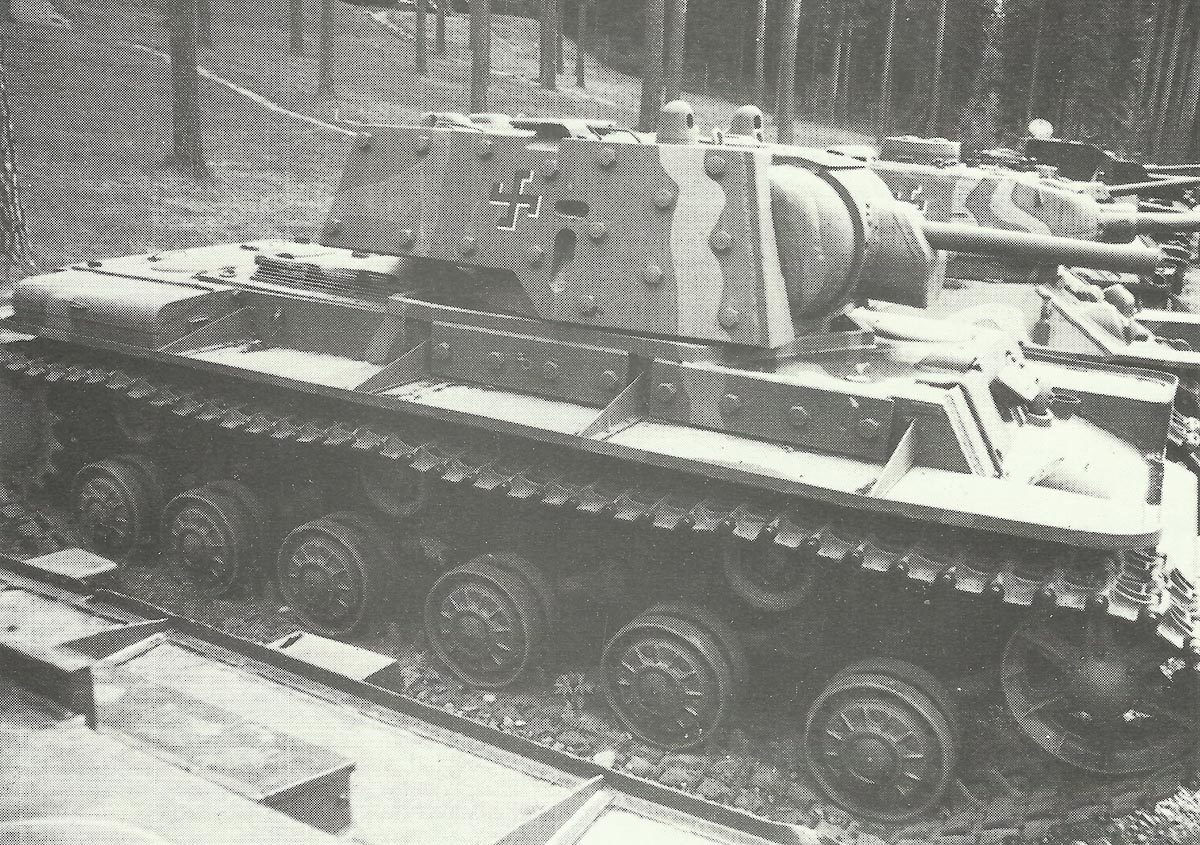
A secondary effect of Kulik’s fantasies was a directive to reinforce the armor of the KV tank. The original turrets had 90 mm frontal and 75 mm side armor. At that time the Izhorskiy works could not produce thicker armor plates, so instead 35 mm additional armor plates were bolted to the turret sides and parts of the hull front and side.
This version was called KV-1 Model 1940 s ekranami (with additional armor) or KV-1E.
The last series of the KV-1 Model 1940 had a new welded turret, which contained a thicker armor and made the additional armor unnecessary. These were almost identical in appearance to the earlier series models without additional armor, the only visible difference is a simpler configuration of the turret side at the lower tail.
The war ended the plans to introduce the KV-3 tank. The 107 mm gun Kulik had insisted on was not yet finished, and the KV-3 prototype was equipped with an 85 mm naval gun and used in the defense of Leningrad.
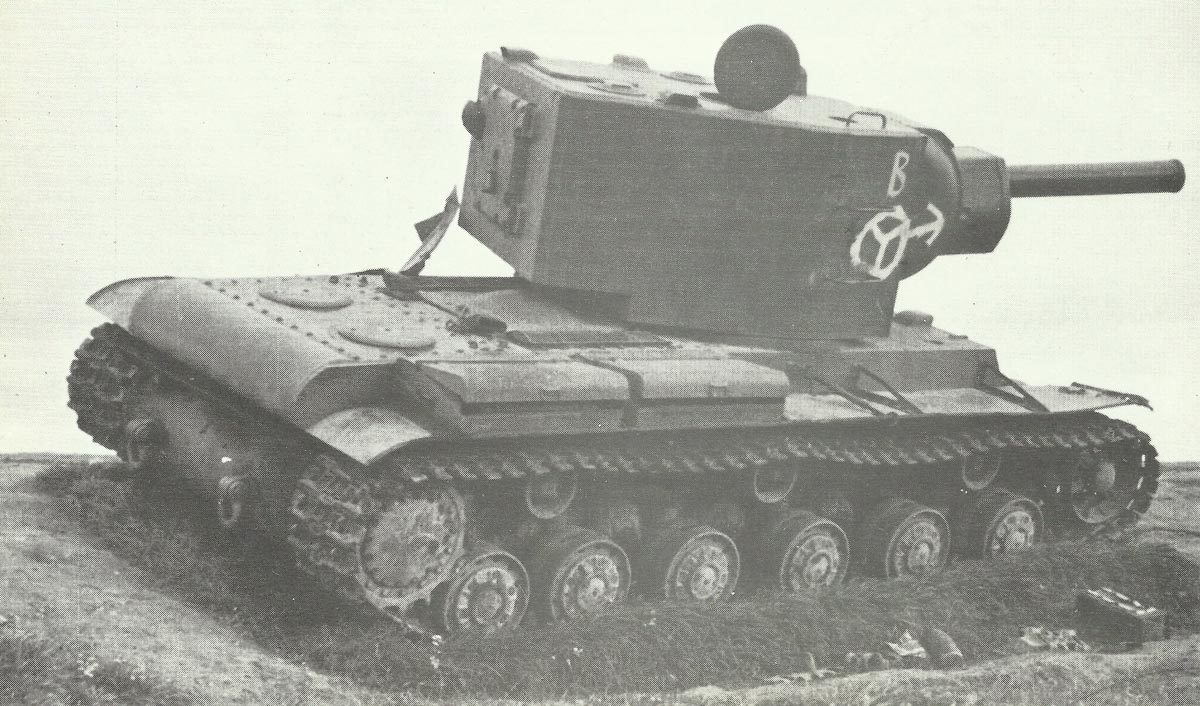
When the production facilities for KV tanks in Chelyabinsk were finally rebuilt, it was decided to drop KV-2 ‘Dreadnought’ in favor of KV-1. In battle the KV-2 had left mixed impressions. The 152mm howitzer was impressive, but its main task of bunker destruction was no longer relevant in the grim winter of 1941-42. Also, its turret was so massive that it was almost impossible to turn it except on flat ground.
Another strange peculiarity was the fact that the KV-1 heavy main battle tank with its F-32 gun was less well armed than the T-34 Model 1941 medium tank built at the same time, which had the more powerful F-34 gun.
As a result, Kotin’s team requested that the F-34 gun be installed into the KV tank, as this would have the added advantage of standardizing the tank guns.
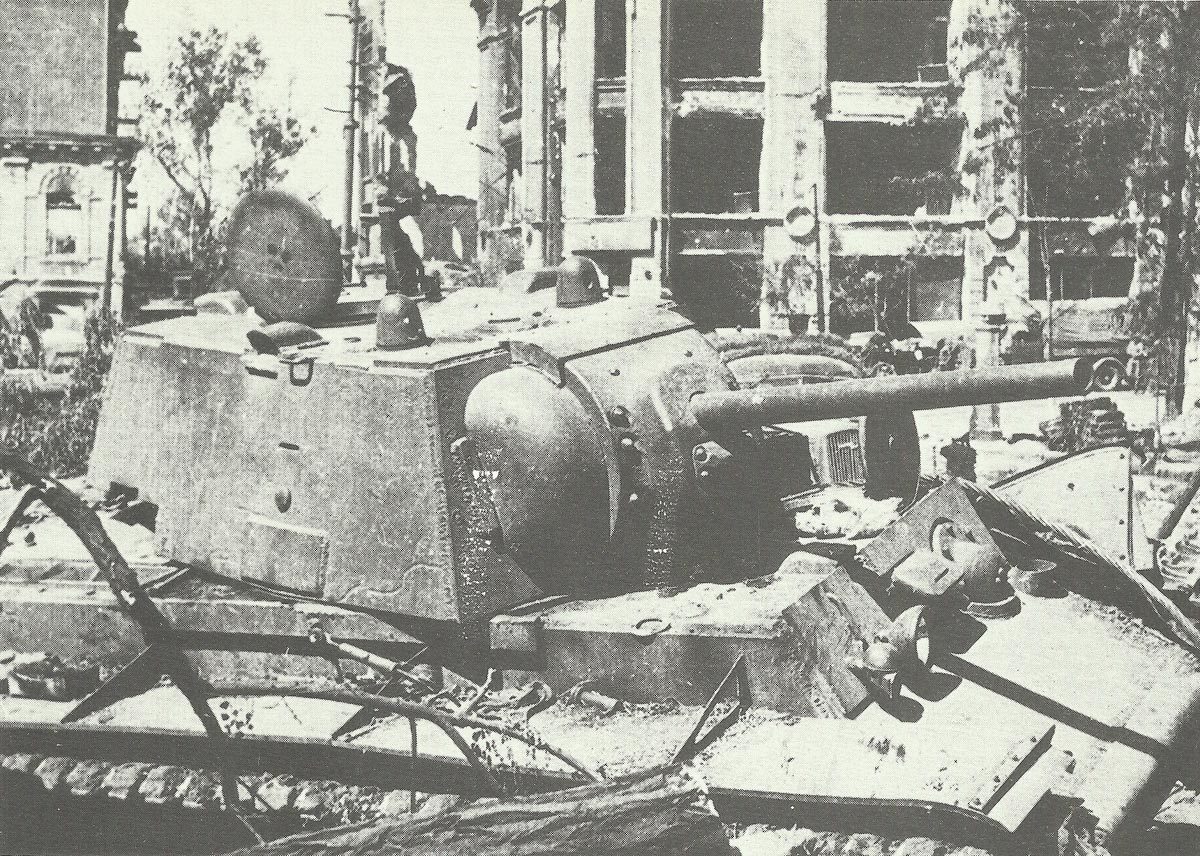
The new KV-1 Model 1941 then had either the F-34 gun or the ZiS-5, which was merely a redesigned F-34 gun that better matched the KV turret fire controls.
The restored production line at Chelyabinsk also focused on simplifying the design in the same way as the T-34 program did.
A newly cast turret, which was easier to produce than the welded tower, was developed. A simpler road wheel was designed, and the use of additional armor plates on the fuselage was simplified and standardized.
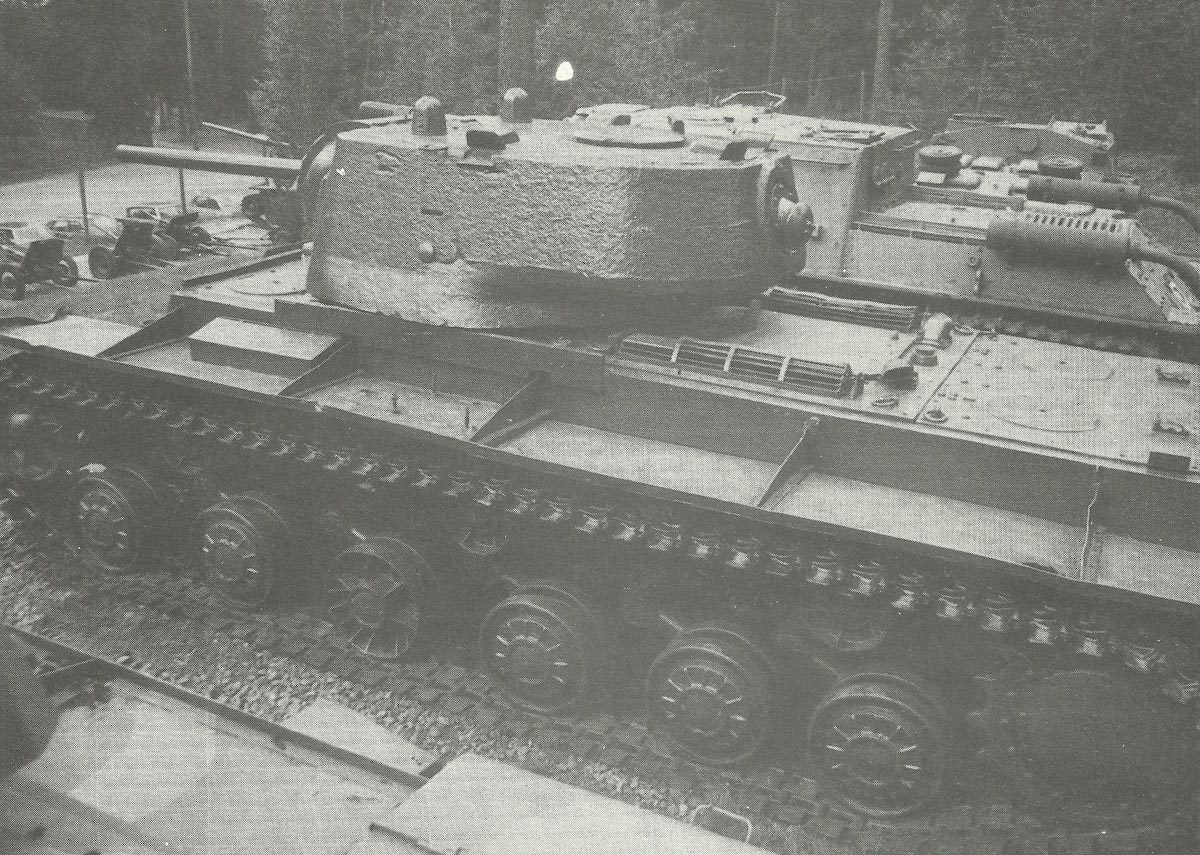
In 1942, Kotins TsKB-2 (Central Development Office 2) introduced further modifications to the KV tank. Under the assumption that one cannot have too much of a good thing, the armor on the chassis was increased from 75 mm to 90 mm.
This variant became the KV-1 Model 1942, which was optically almost identical to the previous Model 1941. The only major difference was the angled, rather rounded overhang at the rear hull.
A new, thick cast turret with 120 mm armor at the front was introduced, although the KW-1 Model 1942 could be seen with the thicker, cast turret or also a thicker, welded turret.
Of course, the thicker armor worsened the performance of the heavy tank, as no engine improvements were made. The result of this was that the KV-1 Model 1942 was taken up by its crews with mixed feelings.

Animated 3D model heavy tank KV-1E
Specifications for KV-1 Model 1940 to Model 1942 and KV-2
Specification:
Specification | Model 1940 | Model 1941 | Model 1942 | KV-2 Model 1941 |
|---|---|---|---|---|
Type | heavy battle tanks | |||
Engine | Model V-2-K V-12 diesel, 600 hp at 2,000 RPM | |||
Gearbox | ? | |||
Crew | 5 | 5 | 5 | 5 |
Turret crew | 3 | 3 | 3 | 3 |
Length (over all) | 29.9ft (6.68m) | 22.15ft (6.75m) | 22.3ft (6.80m) | 22.3ft (6.80m) |
Width | 10ft 10.7in (3.32m ) | = | = | = |
Height | 8ft 10.7in (2.71m) | = | = | 10.8ft (3.28m) |
Weight | 43 tonnes | 45 tonnes | 47 tonnes | 52 tonnes |
Road Speed | 21.75 mph (35 km/hr) | = | 17.35 mph (28 km/hr) | 16.15 mph (26 km/hr) |
Cross-country speed | ? | ? | ? | ? |
Fuel consumption per 100 km | 180 liters | = | 240 liters | 265 liters |
Fuel capacity | 600 liters | = | = | = |
Road radius | 208 miles (335 km) | = | 155 miles (250 km) | 140 miles (225 km) |
Cross-country radius | 93 miles (150 km) | 105 miles (170 km) | 112 miles (180 km) | 93 miles (150 km) |
Vertical obstacle | 47.2in (1.20m) | = | = | ? |
Trench crossing | 110in (2.80 m) | = | = | ? |
Fording depth | ? | ? | ? | ? |
Turning circle | ? | ? | ? | ? |
Climbing power | 36° | 36° | 36° | ? |
Armor:
mm | Model 1940 (max 75mm;min 25mm) | Model 1941 | Model 1942 | KV-2 Model 1941 |
|---|---|---|---|---|
Turret front | 75 | 90 | 120 | 110 |
Turret side | ? | 75 | 120 | 75 |
Turret rear | ? | 75 | 90 | 75 |
Turret top | 25 | 35 | 40 | 35 |
Hull front | ? | 75 | 110 | 75 |
Hull side | ? | 75 | 90-130 | 75 |
Hull rear | ? | 60-75 | 60-75 | 60-75 |
Hull top | 25 | 30 | 30 | 30 |
Hull bottom | ? | 40 | 20 | 40 |
Gun mantles | ? | ? | ? | ? |
Armament and Equipment:
Figures | Model 1939 | Model 1940 | Model 1941 and 1942 | KV-2 Model 1941 |
|---|---|---|---|---|
Main armament | 76.2mm L-11 | 76.2mm- F-32 | 76.2mm F-34 or ZiS-5 | 152mm M10 (figures for ML20) |
Rounds | 111 | 111 | 114 | 36 |
Traverse | 360° | 360° | 360° | 360° |
Elevation | ? | ? | ? | ? |
Muzzle velocity APCBC shell | BR-350: 2,008 ft/sec (612 m/s) | ? | BR-350A: 2,149 ft/sec (655 m/s) "BR-540: 1 | 969 ft/sec (600 m/s)" |
Muzzle velocity DS shell | - | ? | BR-350P: 3,166 ft/sec (965 m/s) | - |
Muzzle velocity HEAT shell | - | ? | 325 m/s (BR-353A) | - |
Muzzle velocity HE shell | F-534: 2,001 ft/sec (610 m/s) | ? | F-534: 2,231 ft/sec (680 m/s) | OF-530: 2,149 ft/sec (655 m/s) |
Muzzle velocity HE-fragmentation shell | OF-350: 2,001 ft/sec (610 m/s) | ? | OF-350: 2,231 ft/sec (680 m/s) | OF-540: 2,149 ft/sec (655 m/s) |
Shell weight APCBC | 13.9lb (6.3 kg) | ? | 13.9lb (6.3 kg) | 107.5lb (48.7 kg) |
Shell weight DS | - | ? | 6.62lb (3.0 kg) | - |
Shell weight HEAT | - | ? | 8.7lb (3.94 kg) | - |
Shell weight HE | 13.75lb (6.23 kg) | ? | 13.75lb (6.23 kg) | 88.3lb (40.0 kg) |
Shell weight HE-fragmentation | 13.7lb (6.21 kg) | ? | 13.7lb (6.21 kg) | 96.5lb (43.7 kg) |
Secondary armament | 2x 7.62-mm-DT-MG | 4x 7.62-mm-DT-MG | 4x 7.62-mm-DT-MG | 3x 7.62-mm-DT-MG |
Radio | - | 71-TK-3 (19.9 miles=32 km) | 9R (17.4 miles=28 km) | 71-TK-3 (19.9 miles = 32 km) |
Telescopic sight | ? | ? | ? | ? |
Penetration mm at 30° armor plates of the guns and shells:
Range | L-11 (APCBC) | F-34 (APCBC) | F-34 (DS) | F-34 (HEAT) | 152mm ML20 (APCBC) |
|---|---|---|---|---|---|
100 meters | ? | ? | ? | c.60mm (75mm/0°) | c.100mm (124mm/0°) |
500 meters | c.50mm (62mm/0°) | 56mm (69mm/0°) | c.74mm (92mm/0°) | c.60mm (75m/0°) | c.100mm (124mm/0°) |
1000 meters | c.46mm (56mm/0°) | 50mm (61mm/0°) | c.48mm (60mm/0°) | c.60mm (75mm/0°) | c.100mm (124mm/0°) |
1500 meters | c.40mm | 45mm | - | c.60mm (75mm/0°) | c.100mm (124mm/0°) |
2000 meters | c.36 mm | 40mm | - | c.60mm (75mm/0°) | c.100mm (124mm/0°) |
Production:
KW tanks | figures |
|---|---|
Production | second half 1940 - second half (KV-2 until autumn 1941) |
Service delivery | 1941 |
Price per unit | 150% of T-34 (193.000 Rubels for T-34 Model 1942) |
Total production figure | 3,015 KV-1, 334 KV-2 (plus 1.232 KV-1S und 130 KV-85 later) |
Service statistics for all KV-1 models (KV-2 in brackets):
Year | Available | production | Losses |
|---|---|---|---|
pre 1939 | - | - | - |
1939 | - | - | - |
1940 | - | 141 (102) | - |
1941 | total 508 (June 22) | 1,121 (232) ? | |
1942 | ? | 1,753 + 780 KV-1S ? | |
1943 | ? | 452 KV-1S + 130 KV-85 | ? |
1944 | ? | - | ? |
1945 | ? | - | ? |
Total | - | 4,711 ? |
References and literature
The Encyclopedia of Weapons of World War II (Chris Bishop)
Soviet Tanks and Combat Vehicles of World War Two (Steven J. Zaloga, James Grandsen)
Panzer und andere Kampffahrzeuge von 1916 bis heute (Christopher F. Foss, John F. Milsom, Colonel John Stafford Weeks, Captain Georffrey Tillotson, Richard M. Ogorkiewicz)
Panzerkampfwagen des 1. und 2. Weltkrieges (Andrew Kershaw)
Krieg der Panzer (Piekalkiewicz)



